The growing popularity of compact SUVs has sparked an intriguing comparison between two strong contenders: the Honda HR-V and the Lexus LBX. Both vehicles offer appealing designs, robust technologies, and impressive fuel efficiency. However, as they cater to different segments of the market, this article will delve into their technical aspects, innovations, and performance metrics to help you make an informed choice.
Honda HR-V vs Lexus LBX – Performance, range & efficiency compared
Two cars, one duel: Honda HR-V meets Lexus LBX.
Which one wins in performance, efficiency and value for money? Find out now!
Design and Dimensions
The Honda HR-V boasts an overall length of 4340 mm, a height of 1582 mm, and a width typical of compact SUVs, providing ample interior space for five passengers. The vehicle's smart design enhances utility, allowing for a trunk capacity of 335 L, expandable to 320 L with seats down.
On the other hand, the Lexus LBX is slightly smaller, measuring 4190 mm in length and 1560 mm in height, with a width of 1825 mm, making it a bit more agile. Although it offers a trunk capacity of 332 L, its rear space decreases to 255 L when seats are folded down. This makes the HR-V a better choice for families or those requiring more cargo space.
Engine and Performance
When comparing the engine types, both vehicles are equipped with full hybrid engines, showcasing a commitment to fuel efficiency. The Honda HR-V produces 130 HP with 253 Nm of torque from its 1498 cm3 4-cylinder engine. Its acceleration from 0-100 km/h is a modest 10.7 seconds, and it achieves a top speed of 170 km/h.
Conversely, the Lexus LBX delivers a slightly higher output of 136 HP from its 1490 cm3 3-cylinder engine, generating 185 Nm of torque. The LBX shows its performance prowess with a swift acceleration of 9.2 seconds to 100 km/h, matching the HR-V's top speed of 170 km/h. For those focused on efficiency, the LBX with a consumption rating of just 4.5-4.8 L/100 km outshines the HR-V’s 5.4 L/100 km.
Transmission and Drive Options
Both vehicles feature automatic transmissions with Continuous Variable Transmission (CVT), ensuring smooth and responsive driving experiences. However, the Lexus LBX offers more flexibility with both Front-Wheel Drive and All-Wheel Drive options, appealing to various driving preferences, especially in challenging weather conditions.
Fuel Efficiency and Emissions
The HR-V falls under the CO2 efficiency class “D,” with emissions of 122 g/km. The fuel tank capacity is 40 L, providing decent range but falling short of the LBX's lower emissions and fuel consumption. The LBX is categorized in class “C” with emissions of 102-109 g/km, and its 36 L fuel capacity still offers impressive distance coverage, particularly for urban driving.
Interior and Technology
While specific interior features may vary, both SUVs prioritize driver comfort and user-friendly technology. The HR-V comes packed with modern infotainment options, spacious seating for five, and Honda's clever Magic Seat feature, providing versatile cargo configurations.
The Lexus LBX accentuates the luxury aspect of the compact SUV class, integrating upscale materials and advanced technology, aiming for a more premium experience even with a smaller sitting capacity for just four. Features like superior sound insulation and intuitive controls highlight Lexus' commitment to comfort and ease of use.
Conclusion
In conclusion, the choice between the Honda HR-V and the Lexus LBX largely hinges on preferences related to space, performance, and price. The HR-V excels in practicality and offers a more accommodating interior, while the LBX impresses with superior acceleration, better fuel efficiency, and luxury amenities. Prospective buyers should weigh these aspects against their specific needs and lifestyles before making their final decision.
Here’s where it gets real: The technical differences in detail
Costs and Efficiency:
Price and efficiency are often the first things buyers look at. Here it becomes clear which model has the long-term edge – whether at the pump, the plug, or in purchase price.
Lexus LBX has a hardly perceptible advantage in terms of price – it starts at 28300 £, while the Honda HR-V costs 29700 £. That’s a price difference of around 1465 £.
Fuel consumption also shows a difference: Lexus LBX manages with 4.50 L and is therefore evident more efficient than the Honda HR-V with 5.40 L. The difference is about 0.90 L per 100 km.
Engine and Performance:
Under the bonnet, it becomes clear which model is tuned for sportiness and which one takes the lead when you hit the accelerator.
When it comes to engine power, the Lexus LBX has a minimal edge – offering 136 HP compared to 131 HP. That’s roughly 5 HP more horsepower.
In acceleration from 0 to 100 km/h, the Lexus LBX is a bit quicker – completing the sprint in 9.20 s, while the Honda HR-V takes 10.60 s. That’s about 1.40 s faster.
There’s no difference in top speed – both reach 170 km/h.
There’s also a difference in torque: Honda HR-V pulls noticeable stronger with 253 Nm compared to 185 Nm. That’s about 68 Nm difference.
Space and Everyday Use:
Whether family car or daily driver – which one offers more room, flexibility and comfort?
Both vehicles offer seating for 5 people.
In curb weight, Lexus LBX is somewhat lighter – 1280 kg compared to 1452 kg. The difference is around 172 kg.
In terms of boot space, the Lexus LBX offers minimal more room – 332 L compared to 319 L. That’s a difference of about 13 L.
In maximum load capacity, the Honda HR-V performs distinct better – up to 1289 L, which is about 295 L more than the Lexus LBX.
When it comes to payload, Lexus LBX slightly takes the win – 475 kg compared to 418 kg. That’s a difference of about 57 kg.
Who comes out on top?
Overall, the Lexus LBX shows itself to be only a minor advantage and secures the title of DriveDuel Champion.
It convinces with the more balanced overall package and proves to be the more versatile choice for everyday use.
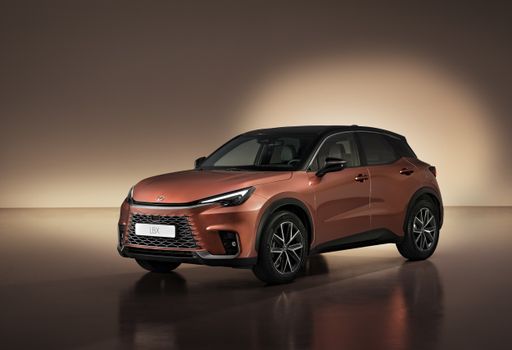 @ Lexus / Toyota Motor Corporation
@ Lexus / Toyota Motor Corporation
Lexus LBX
Honda HR-V
The Honda HR-V impresses with its sleek design, combining a dynamic exterior with a comfortable and spacious interior. This versatile compact SUV offers a smooth and responsive driving experience, making it ideal for both city commuting and weekend adventures. Equipped with advanced safety features and technology, the HR-V ensures a connected and secure journey for all passengers.
details @ Honda Motor Co., Ltd.
@ Honda Motor Co., Ltd.
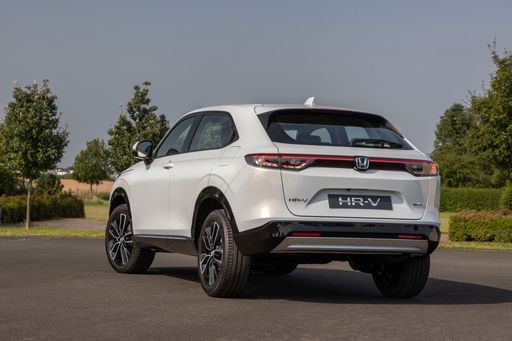 @ Honda Motor Co., Ltd.
@ Honda Motor Co., Ltd.
 @ Honda Motor Co., Ltd.
@ Honda Motor Co., Ltd.
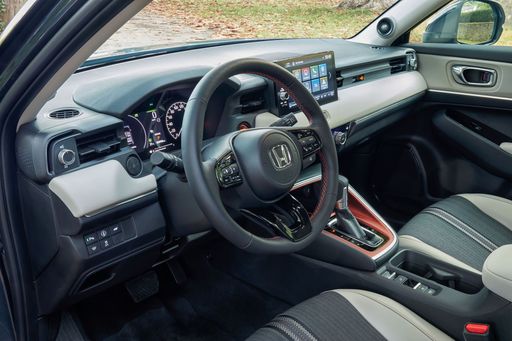 @ Honda Motor Co., Ltd.
@ Honda Motor Co., Ltd.
Lexus LBX
The Lexus LBX represents a new era of compact luxury crossovers, blending a sleek design with exceptional craftsmanship. This model offers an impressive balance of performance and comfort, making it an appealing option for urban driving and longer journeys alike. Inside, the cabin features high-quality materials and innovative technology, ensuring a driving experience that is both sophisticated and connected.
details @ Lexus / Toyota Motor Corporation
@ Lexus / Toyota Motor Corporation
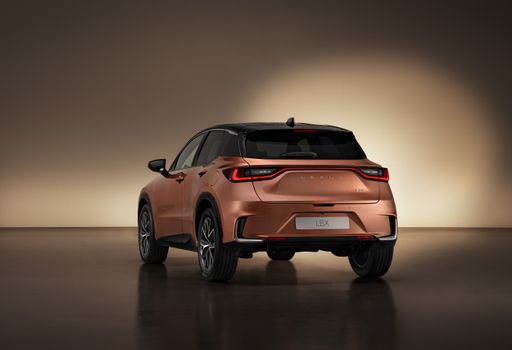 @ Lexus / Toyota Motor Corporation
@ Lexus / Toyota Motor Corporation
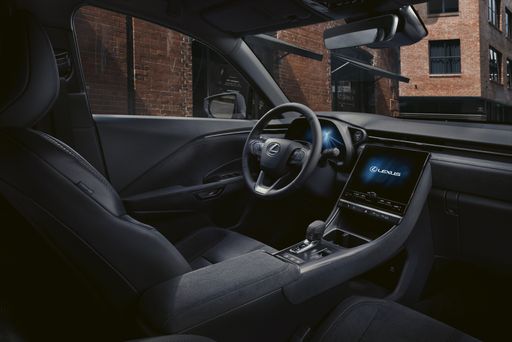 @ Lexus / Toyota Motor Corporation
@ Lexus / Toyota Motor Corporation
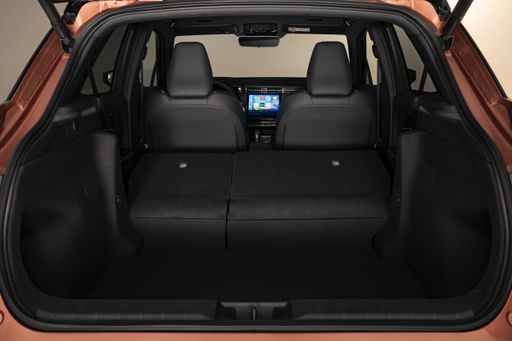 @ Lexus / Toyota Motor Corporation
@ Lexus / Toyota Motor Corporation
 @ Honda Motor Co., Ltd.
@ Honda Motor Co., Ltd.
|
 @ Lexus / Toyota Motor Corporation
@ Lexus / Toyota Motor Corporation
|
|
|
|
Costs and Consumption |
|
|---|---|
|
Price
29700 - 35400 £
|
Price
28300 - 40000 £
|
|
Consumption L/100km
5.40 L
|
Consumption L/100km
4.5 - 4.8 L
|
|
Consumption kWh/100km
-
|
Consumption kWh/100km
-
|
|
Electric Range
-
|
Electric Range
-
|
|
Battery Capacity
-
|
Battery Capacity
-
|
|
co2
122 g/km
|
co2
102 - 110 g/km
|
|
Fuel tank capacity
40 L
|
Fuel tank capacity
36 L
|
Dimensions and Body |
|
|---|---|
|
Body Type
SUV
|
Body Type
SUV
|
|
Seats
5
|
Seats
5
|
|
Doors
5
|
Doors
5
|
|
Curb weight
1452 kg
|
Curb weight
1280 - 1365 kg
|
|
Trunk capacity
319 L
|
Trunk capacity
255 - 332 L
|
|
Length
4355 mm
|
Length
4190 mm
|
|
Width
-
|
Width
1825 mm
|
|
Height
1582 mm
|
Height
1560 mm
|
|
Max trunk capacity
1289 L
|
Max trunk capacity
992 - 994 L
|
|
Payload
418 kg
|
Payload
455 - 475 kg
|
Engine and Performance |
|
|---|---|
|
Engine Type
Full Hybrid
|
Engine Type
Full Hybrid
|
|
Transmission
Automatic
|
Transmission
Automatic
|
|
Transmission Detail
CVT
|
Transmission Detail
CVT
|
|
Drive Type
Front-Wheel Drive
|
Drive Type
Front-Wheel Drive, All-Wheel Drive
|
|
Power HP
131 HP
|
Power HP
136 HP
|
|
Acceleration 0-100km/h
10.6 - 10.8 s
|
Acceleration 0-100km/h
9.2 - 9.6 s
|
|
Max Speed
170 km/h
|
Max Speed
170 km/h
|
|
Torque
253 Nm
|
Torque
185 Nm
|
|
Number of Cylinders
4
|
Number of Cylinders
3
|
|
Power kW
96 kW
|
Power kW
100 kW
|
|
Engine capacity
1498 cm3
|
Engine capacity
1490 cm3
|
General |
|
|---|---|
|
Model Year
2025
|
Model Year
2025
|
|
CO2 Efficiency Class
D
|
CO2 Efficiency Class
C
|
|
Brand
Honda
|
Brand
Lexus
|
What drive types are available for the Honda HR-V?
The Honda HR-V is available as Front-Wheel Drive.
The prices and data displayed are estimates based on German list prices and may vary by country. This information is not legally binding.
